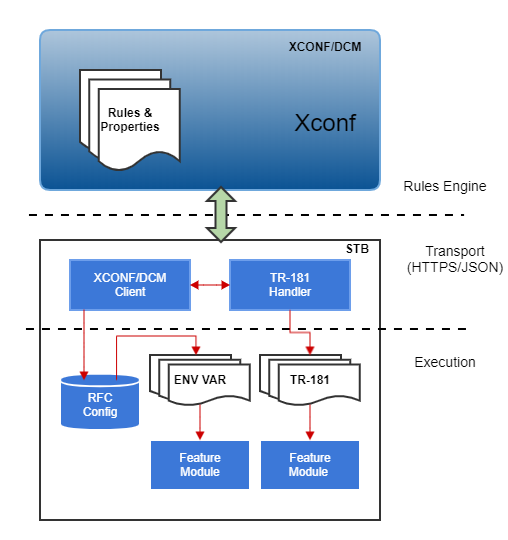
Before RFC, the only way to disable a new feature in the field was to rollback to the older firmware. This led to a lot of operational overhead. Also there were lack of options to do a feature deployment in a subset of devices (for eg: only in 100 devices). Also there was lack of options to deliver dynamic configurations to the box Eg: Whitelist of SSH /SNMP servers, Details of downloadable modules..etc

This approach breaks down the RFC control flow into segments that have specific responsibilities, in accordance with their component design.
An RFC transaction begins with the initiation event that causes the rules engine to evaluate a given rule set. In conjunction with the existing telemetry initialization, which is a HTTP GET sent directly from the client to DCM, the RFC request will be sent at a specific point in the client startup process. The response from XCONF/DCM will include the new JSON data structure that defines the feature control data for that specific client.
HTTP Get to XCONF/DCM requesting RFC settings
The primary use case for RFC is the enable/disable of a specific settop feature (e.g. XB Smart Cloud, or LSA on settops), providing a remote control capability to support a progressive roll-out of a feature, as well as roll-back of an already enabled feature. The execution layer supporting the enable/disable can take one of two forms: using a system agent to run a specific process in a linux/Yocto model directly (using systemd or the like), or to signal an existing process to control the behavior of feature specific processing. The Smart Cloud feature in RDKB is a stand-alone process, and the client-side processing of the enable flag in TR-181 will use systemd to start that process. Alternatively, the LSA feature is an extension of the RMF component, and therefore, doesn't fit the stand-alone process model, and so will use a feature-specific method for executing the enable function.
